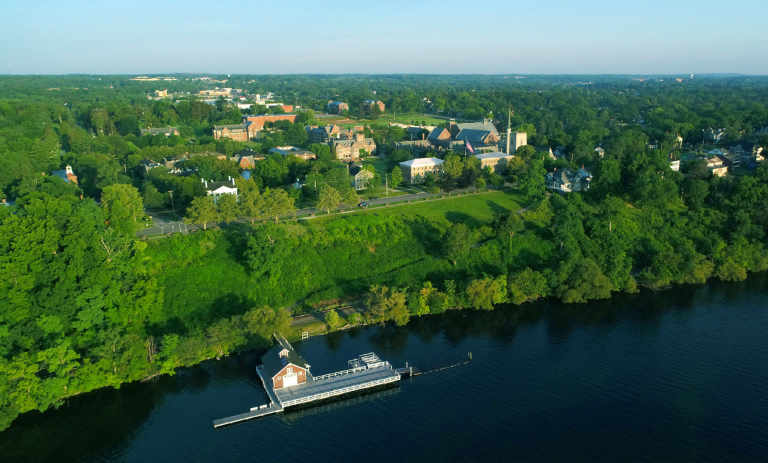
Lives of Consequence
Amy Dreher '93

National September 11 Memorial & Museum
New York, N.Y.
Growing up in Syracuse, N.Y., Amy Dreher ’93 had an eye for things that are unjust and a desire to make things right.
In the 1980s, Syracuse was a struggling city and Dreher was drawn to the people and places experiencing profound crisis. These early encounters led to a career in the non-profit sector working at a string of agencies and organizations, from the Cornell Cooperative Extension in Ithaca, N.Y., to the New York City-based Gay Men’s Health Crisis (GMHC) and Lambda Legal.
Today, she works for the National September 11 Memorial & Museum. But her journey to Manhattan began many years earlier, with a community college professor who encouraged her to consider Hobart and William Smith Colleges.
“Her husband taught at HWS, so she suggested I go look at it, and the rest is history,” Dreher says.
After transferring to William Smith, Dreher combined her interest in art, culture and social justice in an individual major that encompassed studio art, art history and women’s studies. Degree in hand, Dreher first went to work in Ithaca and later New York City, where she now lives, to continue her career in the non-profit world. On Sept. 11, 2001, she was working at Lambda Legal in downtown Manhattan.
“I was five or six blocks from the World Trade Center,” Dreher says. “I was late for work, but I was at the office that morning and walked out with the rest of the staff.”
Like millions of Americans, Dreher felt inspired to do something to help the country heal and rebuild. And in 2005, Dreher took a position with the 9/11 Memorial—the centerpiece of the rebuilding effort of the original 16-acre World Trade Center site.
“I was brought in to manage the direct mail campaign and the donor database,” Dreher says. “A few years into that work, people knew I always had my camera with me, so I started nudging to see if I could help document the construction. And that led me to a different sort of understanding of the project.”
From there, Dreher had the opportunity to serve as the 9/11 Memorial’s staff photographer during the construction of the Memorial Plaza and the first year the Memorial was open. Her images chronicle the transformation that took place behind construction barriers, and sometimes under cover of darkness.
“It was a fascinating thing to be in the middle of this place known for its great sorrow, watching it being rebuilt and meeting the people doing it,” she explains.
Dreher remembers the night that iron workers delivered and installed two surviving tridents from the base of one of the fallen towers.
“They brought in these huge pieces of steel, these tridents, and it was amazing to watch these iron workers placing them. Taking the pieces off of the flatbed and assembling them for the Museum,” Dreher says.
Equally emotional was a massive planting project that now rings the Memorial with mature trees.
“The first night of tree-planting was a bonding moment for many of us working at the Memorial,” Dreher recalls. “It happened at night, behind a blue fence that surrounded the site, so it didn’t look like anything was happening. But once people saw the plaza, they understood what had taken place.”
And her personal story is one that resonates with today’s HWS students, which is why she gladly offered to be part of the Colleges’ Career Services Non-Profit Day.
In the spring of 2015, Dreher hosted a group of HWS students at the Memorial, where she shared her advice and answered questions. The students then laid flowers on the names of the three Hobart graduates who died in the September 11 attacks – Andrew Golkin ’93, Scott Rohner ’01 and Michael Simon ’83, P’11, P’13.
The students raised smart questions and Dreher responded with her own practical wisdom.
“They wanted to know what it’s like to work at an emotionally intense non-profit, and I’ve worked at a few of them,” she says. “We talked about the strain that can put on a person, and how you navigate moving forward. And we talked about how to find a way to do the things you want to do.”
Dreher found that after years of capturing the remarkable images that came out of tragedy, she now has the fulfillment of documenting a living memorial where people can pay their respects.
“To see visitors come up and touch the parapets with the names, it’s incredibly powerful,” she says. “The families finally have a place they can visit.”
